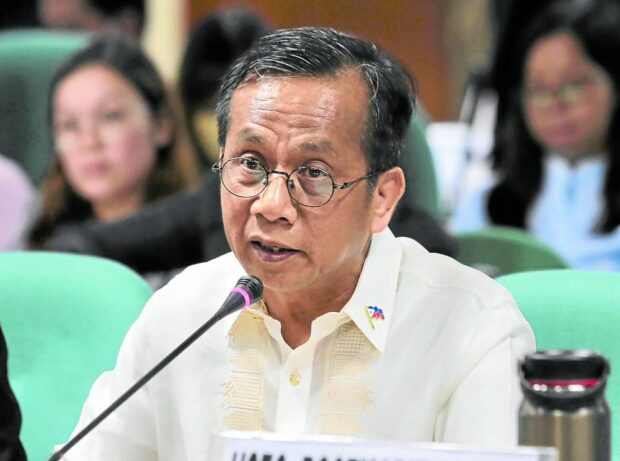
Arsenio Balisacan —Senate PRIB
The country’s poverty rate dropped slightly to 22.4 percent in the first semester this year from 23.7 percent in 2021, the Philippine Statistics Authority (PSA) reported on Friday, citing results of its nationwide survey.
According to Socioeconomic Planning Secretary Arsenio Balisacan, the poverty rate would have had a more substantial decrease if not for the high inflation this year.
The PSA’s survey showed that there were 25.24 million Filipinos living in poverty in the first half of the year, compared with 26.14 million in the same period in 2021. The poll covered 171,588 families.
The survey, to be conducted every two years from hereon, had previously been conducted every three years.
High inflation
The latest poverty rate was slightly higher than the 21.1 percent in 2018, before the pandemic started.
The PSA said that 9.79 million Filipinos found their income insufficient to meet their food requirements. That figure was equivalent to a subsistence incidence of 8.7 percent, slightly down from 9.9 percent in 2021, the PSA said.
READ: PSA: Inflation rate in Ilocos region dropped in July
Balisacan, who heads the National Economic and Development Authority (Neda), said in a news conference on Friday that “the high inflation in the first semester of 2023 partially offset the positive effect of income growth on poverty.”
He added that the drop in poverty “would have been about 16 percent instead of the observed 22.4 percent,” if inflation had not averaged 7.2 percent in the first half of the year, well above the government’s 2-percent to 4-percent target range.
Although consumer prices have slowed down to 4.1 percent as of November, Neda pegs the year-to-date average of inflation at 6.2 percent.
Poverty benchmark
To compute the poverty rate, state statisticians use a poverty threshold—or the estimated monthly budget that a family of five would need to meet their basic needs.
For the latest survey, the PSA set the threshold at P13,797, up from the P12,082 benchmark two years ago, after the agency recorded a 21.4-percent increase in per capita income among the country’s poorest 10 percent from P8,318 in 2021 to P10,098 this year.
The government also raised the poverty threshold this year because of the above-target inflation, according to National Statistician Claire Dennis Mapa.
President Marcos has set an ambitious goal of bringing down poverty to 9 percent before the end of his six-year term in 2028.
Balisacan said that with the latest data, the possibility of reaching that goal is now “higher.”
But Dr. Leonardo Lanzona, economist at Ateneo de Manila University, disagreed with Balisacan, saying that the government should tackle the “individual” needs of poor Filipinos.
“Helping those households in a poverty trap is a more permanent way of reducing poverty incidence. This pertains to households caught in poverty for several generations [that] have not found any assistance,” he said.